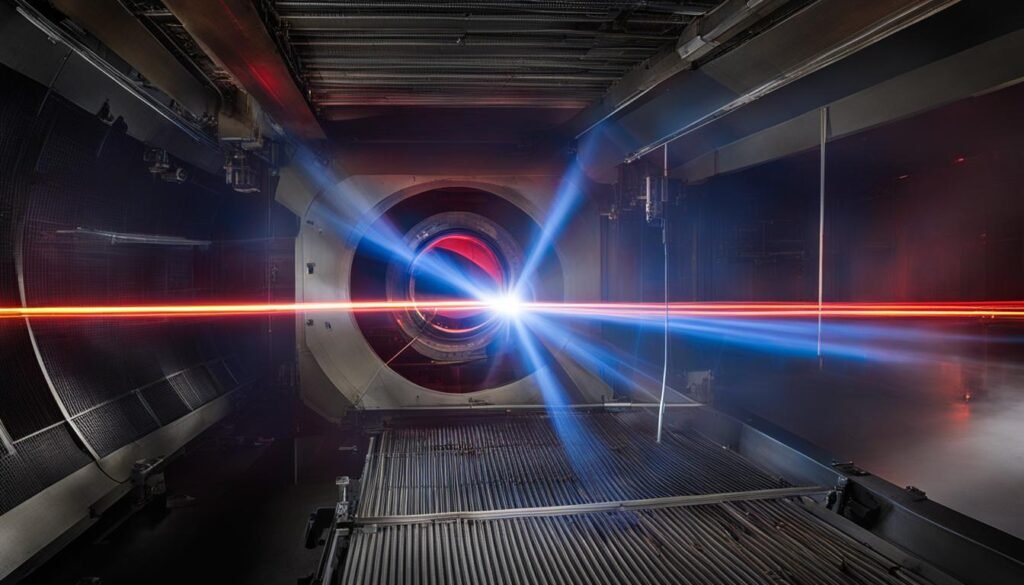Laser concentricity test is a precision technique used in various industries in the United States to measure the alignment and concentricity of cylindrical components. It involves using laser technology to analyze the concentricity of an object by comparing its central axis to a reference axis. The measurement is based on the derived midpoint axis and requires precise calculations to determine the exact measurement.
Contents
Key Takeaways:
- Laser concentricity test is a precision technique used in various industries in the United States.
- It involves using laser technology to analyze the concentricity of cylindrical components.
- Measurement is based on the derived midpoint axis.
- Precise calculations are required to determine the exact measurement.
- Laser concentricity test ensures the alignment and precision of cylindrical components.
What is Concentricity in GD&T?
Concentricity, in the context of Geometric Dimensioning and Tolerancing (GD&T), refers to the tolerance that controls the central axis of a referenced feature to a datum axis. It is considered the circular form in GD&T symmetry. Concentricity is a complex measurement as it relies on derived axis rather than tangible feature or surface measurements. It is often measured by using a combination of circularity and runout. GD&T is a crucial system for defining tolerances in engineering and is widely used in industries such as manufacturing, commercial design, electronics, aerospace, and automotive.
Understanding GD&T Symmetry
GD&T symmetry is an essential concept in concentricity measurement. Symmetry refers to the conditions where precision is required, ensuring that the shape or feature remains balanced or equally distributed about a centerline or axis. In the case of concentricity, the symmetry is represented by the circular form, where the central axis should align perfectly with the datum axis. Any deviation from this alignment indicates a lack of concentricity.
GD&T symmetry plays a critical role in ensuring the performance and functionality of components in various industries. It allows engineers to establish precise tolerances and control the alignment of cylindrical features, ensuring optimal operational efficiency and accuracy.
Measuring Concentricity: Circular Form and Runout
Achieving accurate concentricity measurements requires measuring the circular form and runout of the referenced feature. The circular form focuses on analyzing the geometric shape of the feature to ensure it aligns concentrically with the datum axis. Meanwhile, runout measures the variation in the feature’s axis as it rotates, assessing its alignment with the datum axis. By combining these measurement techniques, engineers can determine the concentricity of the feature and ensure it falls within the specified tolerances.
GD&T concentricity measurements are crucial for quality control and precision alignment in industries that require high levels of accuracy. By following GD&T principles and utilizing the appropriate measurement tools and techniques, manufacturers can ensure the functionality, reliability, and performance of their products.
Measurement and Gaging of Concentricity
Measuring concentricity accurately is a crucial task that requires careful consideration of various factors. One of the initial steps involves establishing a measurable datum axis, which serves as a reference for the concentricity measurement process. By having a reliable datum axis, engineers can ensure precise measurements and maintain consistency in their analysis.
The measurement of concentricity often involves taking cross-section measurements of the component under examination. These measurements provide valuable insights into the exact plot of the surface, enabling engineers to locate the median points effectively. By plotting these points, engineers can determine if they fall within the cylindrical tolerance zone, which further helps in assessing the concentricity of the object.
To facilitate accurate and efficient concentricity measurement, various concentricity gages are utilized in different industries. These gages come in a variety of forms, such as manual or automated concentricity checkers, optical shaft measuring systems, laser micrometers with concentricity fixtures, roundness measuring machines, or coordinate measuring machines. Each gage offers its unique advantages and capabilities, catering to the specific requirements of the industry or application.
By employing these advanced measurement techniques and utilizing the appropriate concentricity gages, engineers can ensure the precision and functionality of cylindrical parts. This is particularly crucial in industries that demand high levels of accuracy, such as medical device manufacturing. Accurate concentricity measurement and gaging play a pivotal role in achieving reliable and quality-driven outcomes in these sectors, ultimately contributing to the overall success of the industry.



